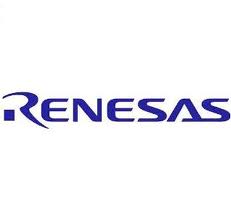Dusseldorf, October 23, 2012 – Renesas Electronics, a semiconductor systems supplier, has introduced Smart Analog, to help engineers implement sensors in embedded designs. Renesas has also unveiled a microprocessor roadmap.
Modern sensor devices are complex systems that require tuning of circuitry to convert the analog signals produced by the sensor itself into a signal appropriate for a microcontroller’s (MCU) analogue-to-digital converter (ADC) subsystem. This iterative tuning process is time-consuming, adversely affecting time-to-market for most projects.
The analogue front end (AFE), an essential system building block to a sensor circuit, amplifies and/or filters sensor signals that are often weak, or its electrical configurations differ from the one used by the MCU. The AFE that performs this vital bridging function is often difficult to simulate and must be adjusted because of specific component behaviour, board layout, and nearby noise sources.
In many cases, engineers must use a trial-and-error method to calibrate the right analogue circuit design.
Renesas is leveraging its technology expertise in both microcontrollers and analogue integrated circuits (ICs) to develop Smart Analog, what the company describes as “an ingenious yet simple way for embedded designers to configure their analogue circuits speeding time-to-market, while leveraging the MCU to automate sensor trimming and correct for long-term drift resulting in a more intelligent sensor”.
Key features of the Smart Analog include:
1) Configurable amplifier circuits that adapt to hundreds of sensor applications
The Smart Analog technology implements a range of AFE topologies designed to be easily programmed to support countless types of sensors with a single device. The technology uses a set of configurable amplifier circuits which can be tailored using an intelligent and intuitive software GUI (graphical user interface). This configurability enables the engineer to adjust for sensor, board, noise and other characteristics without board-level experimentation. As Smart Analog is field-programmable, the circuit characteristics can be modified for sensor drift after equipment is installed, therefore reducing service and maintenance costs for system vendors. With Smart Analog technology, sensors such as accelerometers, flow, ultrasonic distance, gas/chemical, or even human body sensors can be easily tuned to meet the system requirements for a wide range of industrial, commercial and medical applications.
2) Low-power, small footprint hardware platform
Smart Analog technology replaces the discrete components that typically measure and regulate sensor data, into a single semiconductor package. Discrete component count can be reduced by as much as a factor of 10, allowing for a much smaller overall footprint. Additionally, the power on/off feature of each block of Smart Analog subsystem yields significant savings in power consumption, in some cases as much as 20%.
3) Reduced development time and cost
You no longer need to be an analogue expert to design your AFE, according to Renesas. Engineers will be able to get their development projects up and running quickly and easily with the powerful GUI-based sensor configuration software tool that enables ‘on the fly’ configuration and simulation of the analogue front-end, by allowing the designer to easily change gain values or do offset tuning. This greatly simplifies sensor calibration and debugging and can reduce the overall design lead time between 3 – 8 months significantly lowering development costs.
The Smart Analog technology expands Renesas’ portfolio of technology solutions to provide developers with a platform on which to innovate while focusing their core areas of expertise.
ARM-based MPU family unveiled for graphics, HMI and office networking
In a separate announcement on the same day Renesas Electronics Europe disclosed details of its roadmap for next-generation microprocessors (MPUs). The new family of ARM-based high-performance embedded MPUs will be called the ‘RZ Family’ and will be developed for applications requiring high-speed data processing in excess of 300MHz, specifically human machine interfaces and networking.
Across the embedded market space, two of the most important system developments are in terms of adding additional services through increased connectivity and ensuring that the end-user has a richer experience. This is a focus area for the new MPU family from Renesas. The RZ Family will include up to 10Mb of internal RAM and has been designed to allow GUI and networking development teams to not only achieve high performance but also reduce the bill of materials cost and lower the system power consumption.
New RZ family
The new RZ family of embedded MPUs is designed to meet the need for high-performance processing of 300MHz and higher, and will be able to be used with general-purpose operating systems such as Linux as well as other commercial RTOS offerings. The new family will combine the Cortex-A9 core from ARM, which has a global software ecosystem with Renesas high-performance and low-power technologies, as well as Renesas’ extensive and proven library of peripherals. The new offering will include two series which are optimised for the two primary application areas:
• Graphic and Human Machine Interfaces (HMI) – The RZ/A Series will focus on HMI applications supporting up to XGA graphics processing. The first product in this series will integrate a 400MHz ARM Cortex-A9 core and up to 10Mb of on-chip RAM to provide advantages such as high performance, lower power consumption and system cost reductions, eliminating the need for external DRAM. It will also include hardware acceleration for the Open VG 1.1 standard to allow rich GUIs to be implemented easily.
• Connectivity – The RZ/N Series will focus on connectivity to the cloud and other equipment. The first product in this series will integrate an 800 MHz ARM Cortex-A9 core, Gigabit Ethernet and USB 3.0 to provide a range of interface functions to connect with IT equipment.
Renesas plans to provide samples of the first RZ product, a high-performance, 40nm device RZ/A Series, in 2Q of 2013.










